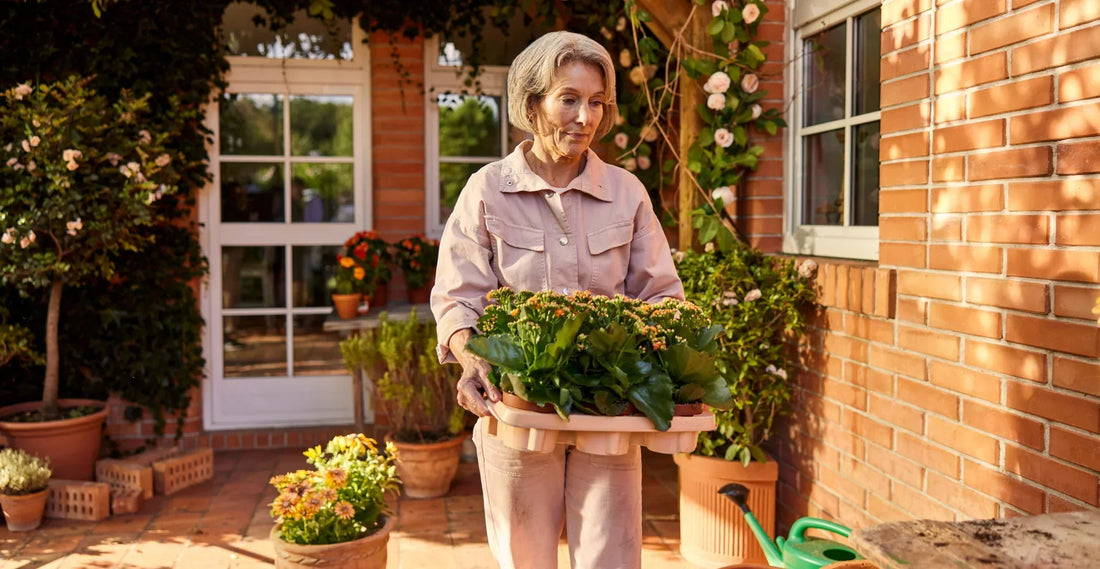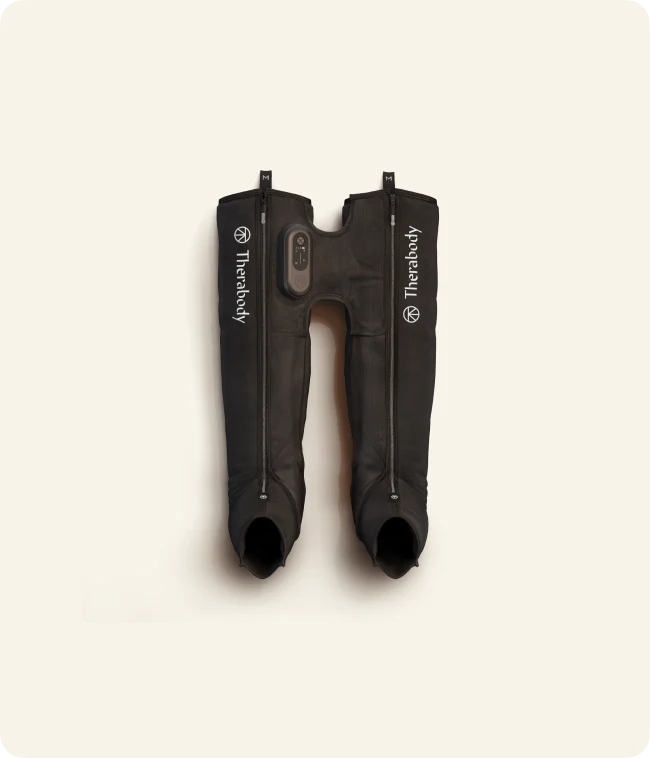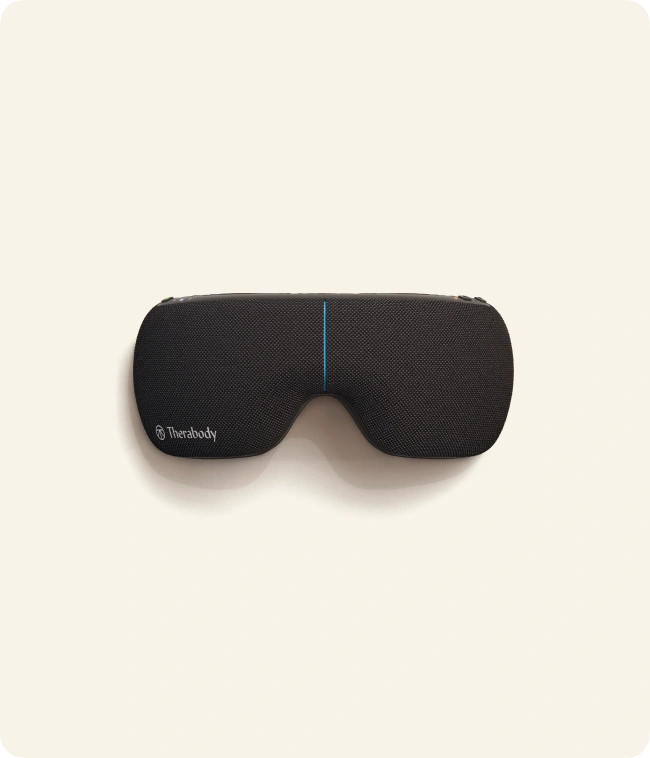
10 Tips to Stay Active During Menopause
Authors: Therabody Scientists: Tim Roberts, MSc; Rachelle Reed, PhD, MS, ACSM-EP; Michelle Darian, MS, MPH, RD, LDN
Staying physically active is important at every age –– and becomes even more important for women as they age.
But less than 25% of adults meet the recommended physical activity guidelines. And that drops to under 14% in adults over 65. [1, 2]
Here, we’ll break down why physical activity is essential during menopause and share 10 practical tips on how to stay physically active in this phase of life.
What happens as women enter menopause?
Levels of the hormone estrogen decline: Estrogen levels decline during menopause and can negatively impact heart, bone, and muscle health. [3]
Risk of heart disease increases: Because estrogen helps regulate cholesterol and blood sugar levels, these markers can rise during menopause when estrogen declines.
These changes elevate the risk of heart disease, (the leading cause of death in women). [4]
Bone mineral density can decline: Estrogen also plays a role in bone health. As estrogen levels decline, bone mineral density can decrease, increasing a woman's risk of developing osteoporosis. [5]
Muscle mass may shrink: Like bone health, declining estrogen levels affect muscle mass and strength by reducing muscle protein synthesis, leading to greater muscle loss — a condition known as sarcopenia. [6] Women need muscle mass for everything from maintaining a healthy metabolism to walking and lifting heavy objects. [7]
Mental wellbeing can decline: While not only caused by estrogen loss, hormonal shifts during menopause can increase stress and anxiety, which may make it harder to stay active –– despite exercise being a proven way to reduce both. [8]
In a phase of life that can feel out of your control, there are still ways to protect your health. Exercise is one thing you can control during menopause that can help protect heart, bone, muscle, and mental health.

How staying active helps you age
Movement isn’t just about fitness — it’s about function. Staying active as you age can improve your health and quality of life by: [9]
- Helping you maintain mobility and independence
- Reducing heart disease risk
- Improving bone density and lowering your risk of falling
- Maintaining and building muscle
- Supporting memory and cognition
- Lowering the risk of depression and anxiety
- Promoting sleep, energy, and a positive outlook on life
How much physical activity do you need?
The Physical Activity Guidelines for Americans recommend that all adults get at least 150 minutes of moderate-intensity aerobic (cardio) activity per week or 75 minutes of vigorous-intensity activity per week. [10]
This includes activities like hiking, jogging, walking, and climbing up and down stairs.
The guidelines also recommend that all adults participate in muscle-strengthening activities two or more days per week that activate all major muscle groups (including your legs, hips, back, abs, chest, shoulders, and arms).
These activities include bodyweight exercises, weightlifting, carrying heavy groceries, and even some forms of Pilates.
For adults over 65, the guidelines also recommend including exercises that improve your balance and coordination, like walking backwards or standing on one leg, to help reduce the risk of falls.
While many people know it’s important to stay physically active, doing so consistently can be a challenge. Here are 10 tips on maintaining a consistent activity regimen that you actually look forward to.

10 tips to stay active (without overhauling your life)
1. Start where you are
Whether you're just getting back into a routine or exercise regularly, meet your body where it's at and progress from there.
- For strength: Lifting heavy weights means a weight that is heavy for you. For some people, a heavy weight for bicep curls is 5 pounds; for someone else it may be 20.
- For cardio: If you’re new to aerobic exercise, jumping right into a high-intensity interval training class can be physically and mentally overwhelming. Try starting with adding brisk walks into your weekly schedule, building up over months to attending a HIIT class.
The key is gradually increasing the amount, frequency, or intensity of your activity over time –– a technique called progressive overload.
This approach helps your body adapt safely, building strength, endurance, and resilience. Trying to do too much too soon can lead to burnout or injury (neither of which supports long-term consistency). [11]
Give yourself time (and a bit of grace!) to see positive changes.
2. Find exercises you truly enjoy
The most effective workout is the one you’ll actually do.
When movement feels good — whether it’s a dance class, a hike with a friend, or a solo strength session to your favorite playlist — you’re far more likely to stick with it. If you loathe running, don’t slot it in as your cardio. Try cycling, dancing, swimming, or hiking instead.
While not every workout will feel like a blast, the overall enjoyment of the activity is what fuels consistency. This consistency is what leads to lasting health benefits. [12]
3. Make it social
Movement doesn’t have to be a solo mission. Social support is one of the strongest predictors of sticking with physical activity (and it even reduces stress levels). [13]
Joining a group fitness class, walking with a friend, or playing an active game with your kids or grandkids can make movement more enjoyable and motivate you to follow through on your activity plan.

4. Move throughout the day
Every bit of movement throughout your day counts towards improving your health.
Breaking up long periods of sitting with short bursts of activity (like walking up the stairs, folding laundry, or doing 10 bodyweight squats) helps keep your body and mind energized. [14]
This approach encourages maximizing daily movement, especially NEAT — non-exercise activity thermogenesis, the calories you burn from more spontaneous activities (which can really add up!) rather than planned workouts. [15]
Even just a few minutes of movement every hour can improve circulation, support mobility, and add up to meaningful change.

5. Incorporate strength-based moves
Strength training can sound intimidating. But it doesn’t have to be. You don’t need a gym membership or heavy weights to get started. Simple, accessible movements like squats and step-ups on a low exercise box that use just your body weight can be incredibly effective.
As you build confidence and strength, you can add resistance using dumbbells, resistance bands, or even a weighted vest to safely make things more challenging.
Remember: The Physical Activity Guidelines recommend strength training for all major muscle groups at least twice a week.
6. Focus on flexibility and mobility
Flexibility and mobility are key to staying active and independent as you age — and they’re often overlooked. Prioritizing these areas can make everyday tasks like reaching for something on a high shelf or standing up from the floor feel easier.
Simple stretching routines, gentle yoga, or mobility-focused movements can help keep your joints moving well and your muscles flexible.
Plus, massage guns like the Theragun® use percussive therapy to support flexibility by reducing muscle tension. Percussive therapy helps loosen tight muscles and improve blood flow, which can improve your range of motion when used before an activity. [16, 17, 18]
Theragun stimulates sensory receptors in the muscle to trigger muscle relaxation and can help reduce pain and soreness. [19]
Incorporating these practices into your day, even for a few minutes, can go a long way in supporting long-term movement and freedom.
7. Make balance training a part of your routine
With age, maintaining balance and proprioception (your body’s sense of position and movement) becomes essential for reducing the risk and severity of falls. [20]
Practices like yoga and Tai Chi are excellent for building stability and core strength, but even simple things like standing on one leg while brushing your teeth can make a big difference over time. [21, 22]
Pro tip: Try the star balance task: stand on one leg and gently reach your other foot in different directions (like points on a star) to challenge your control and coordination. Don’t forget to breathe!
8. Find a scenic walking route
Walking isn’t just great for your body; it’s an opportunity to feel more immersed in your environment. Whether you prefer a tree-lined neighborhood, woodsy trail, or a fun city, enjoying the space you’re in is a motivating factor to staying consistent with movement.
9. Add workouts to your calendar
Calendars are chock-full of work meetings, appointments, school drop-off schedules, and dinner plans, so why not schedule your workouts, too? When you prioritize and put your workouts on the calendar, they’re more likely to happen.
Block time for your favorite class or carve out 30 minutes for a walk or strength session.
Remember: Short bursts of movement still count!

10. Listen to what your body needs
Some days, you might feel strong and energized, ready to add more weight or push through extra reps. Other days, motivation is low or fatigue sets in. It’s okay to shift gears and choose something like a light yoga flow or stretching session instead.
Planning out your more intense workout days and recovery days is helpful — but life isn’t always predictable. You’re human, and flexibility matters.
Remember: Some movement is better than none, and more is better than some. But, the type and intensity of that movement can and should be adjustable when you need it.
Key takeways
- Staying active during menopause doesn't require perfection — it requires consistency.
- Start where you are and build gradually, focusing on movement that feels good and fits your lifestyle.
- Strength training, balance work, and mobility exercises all keep you strong, steady and independent.
- Prioritize enjoyable movement, whether it's an activity you like, while listening to an incredible playlist, or with someone you love.
References
- https://www.cdc.gov/nchs/fastats/exercise.htm
- https://www.ncbi.nlm.nih.gov/books/NBK610676/
- https://pubmed.ncbi.nlm.nih.gov/17630397/
- https://pubmed.ncbi.nlm.nih.gov/33251828/
- https://pmc.ncbi.nlm.nih.gov/articles/PMC9188893/
- https://pubmed.ncbi.nlm.nih.gov/31171417/
- https://pmc.ncbi.nlm.nih.gov/articles/PMC2804956/
- https://pubmed.ncbi.nlm.nih.gov/36696648/
- https://www.cdc.gov/physical-activity-basics/health-benefits/older-adults.html
- https://odphp.health.gov/sites/default/files/2019-09/Physical_Activity_Guidelines_2nd_edition.pdf
- https://pubmed.ncbi.nlm.nih.gov/20699165/
- https://pmc.ncbi.nlm.nih.gov/articles/PMC8894246/
- https://pubmed.ncbi.nlm.nih.gov/29084328/
- https://www.nature.com/articles/s41591-022-02100-x
- https://www.ncbi.nlm.nih.gov/books/NBK279077/
- https://pubmed.ncbi.nlm.nih.gov/37711710/
- https://pubmed.ncbi.nlm.nih.gov/36161205/
- https://pubmed.ncbi.nlm.nih.gov/33466606/
- https://pubmed.ncbi.nlm.nih.gov/33466606/
- https://pmc.ncbi.nlm.nih.gov/articles/PMC6734411/
- https://pubmed.ncbi.nlm.nih.gov/35103525/
- https://pubmed.ncbi.nlm.nih.gov/37736087/





